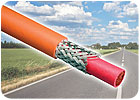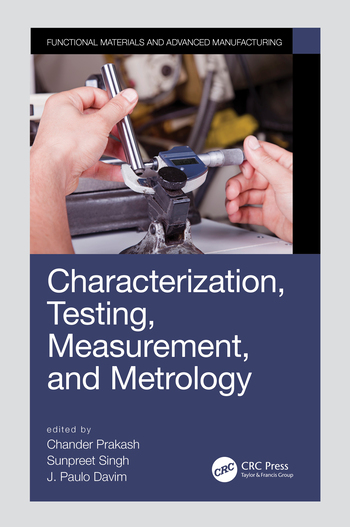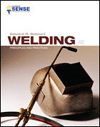
If clothes make the man, as the old adage says, then insulation makes wire and cable. Without insulation, heat would build up and cause shorts, sparks and flames. Whether it’s aluminum or copper wire, thick or thin cable, insulation is essential.
“The main function of insulation is to insulate conductors, such as copper or aluminum, from other conductive materials that could carry current,” says Doug Gruber, product business unit director for electrical and electronic architecture distribution systems at Delphi Corp. “Resistance to cuts and abrasion are key insulation characteristics.”
The ongoing trend toward hybrid and electric vehicles is forcing the cable and wire industry to develop products that minimize environmental impact in terms of fuel economy gains and end-of-life recyclability.
“There is continual pressure on suppliers to offer more performance for less money,” notes Graham Smith, regional sales manager at Spectrum Technologies PLC, which produces laser marking and stripping equipment. “There also is pressure to use less material to achieve the desired electrical performance across the operating environment in terms of temperature, chemical resistance, mechanical flexibility and abrasion resistance.”
“There is pressure to replace older, lower performance materials with newer ones that can offer the desired performance more cheaply, or better performance for the same price,” adds Smith. Wire manufacturers are using new advances in polymer processing and production equipment to make more complex wire structures that include different insulation materials.
“The trend toward packing more electrical and electronic functionality into a given platform, whether it is an aircraft or a PDA, means that wire and cable has to be able to do more, in less space,” Smith points out.

Numerous Options
Engineers have many options today when specifying the wires for a harness, not the least of which is insulation. The decision can have major implications for cutting, marking, stripping and other wire processing applications.Insulation comes in a wide variety of materials. Selection is typically determined by factors such as stability and long life, dielectric properties, resistance to high temperature, resistance to moisture, mechanical strength and flexibility.
“There is no single insulation that is ideal in every one of these areas,” says Brian Hirt, marketing manager at IEWC, a leading supplier of wire, cable and wire management products. “It is necessary to select a cable with the type of insulation which fully meets the requirements of the application.”
According to Hirt, the types of insulation and jacket materials available today can be classified into three groups:
Extrudable primary insulations, which are applied directly over the conductor. Many of these materials are also used for jackets. These include polyvinyl chlorides (PVCs), polyethylenes, fluorocarbons and silicones.
Tape insulations, which are used as a primary insulation. This includes polytetrafluoroethylene, Kapton, mica and polyester, either alone or laminated with other materials.
Jackets applied over primary insulation, shields, cable components or over the cable itself. This includes many of the primary insulating materials, such as nylon, neoprene, Hypalon, ethylene-propylene rubber and polyurethane.
Engineers also need to specify either thermoset or thermoplastic insulation. Thermoset materials feature tightly interlocked molecules that harden when overheated. They typically provide better low-temperature properties than thermoplastics. Thermosets include cross-linked polyethylene (XLPE), ethylene-propylene rubber and silicone.
Thermoplastic materials have loosely connected molecules that soften when overheated. However, they are typically less expensive than thermosets. Thermoplastics include PVC, polyethylene, nylon and Teflon.
Wire insulations in the North American automotive market are dominated by PVC and XLPE materials. “More than 95 percent of transportation applications use PVC and XLPE wiring,” claims Fred Kelly, engineering director at Prestolite Wire LLC. “The other specialty wire insulations [are used] in specific severe application environments. However, there have been changes in the expectations of wiring insulations.”
Kelly says insulation has become thinner due to higher wire content per vehicle and the limited space available for wiring. Vehicle electrical systems routinely exceed the old 60-volt standard, and some vehicles are now equipped with 600-volt systems.
“Longer vehicle warranty and durability [specifications have] resulted in tougher test methods and requirements being added to OEM standards,” Kelly points out. “As a result, wire insulation recipes have been improved to last longer and withstand more severe environmental conditions, such as higher temperature ratings, hot water and chemical resistance, and higher abrasion resistance.”
While PVC still dominates, there’s been a push recently for more environmentally friendly insulation compounds. Most of this has been driven by European initiatives such as RoHS (Restriction of Hazardous Substances) and REACH (Registration, Evaluation, Authorization and Restriction of Chemicals). Materials that boast low-smoke, zero-halogen properties, such as modified polyphenylene ether (mPPE), are being promoted as green alternatives to PVC.

Green Alternatives
Delphi developed a halogen-free ultra thin-wall cable for the auto industry several years ago. It’s manufactured using a mPPE recyclable coating. “Traditional methods call for PVC insulation in wiring used in a vehicle body or interior, or an XLPE insulation,” says Gruber. “Both have different impacts when it comes to the environment.
“PVC contains halogens, which are effective, but can make the insulation itself difficult to dispose of at end of life, as the halogens can escape and produce byproduct compounds if the cable is incinerated,” explains Gruber. “XLPE is halogen-free, but is not highly recyclable. Using a polyphenylene ether alloy takes care of both halogen-free and recyclability issues, yet remains cost-effective and robust.”
RS Components Ltd. recently unveiled a product called EcoWire. According to James Howarth, product manager, it “achieves expanded functionality over standard PVC-based hook-up wire with insulation that is fully recyclable.”
Using a thermoplastic that is inherently lighter, tougher and more durable than PVC, EcoWire is non-halogenic and contains no heavy metal pigments. The result is UL-approved wire that helps manufacturers meet Waste Electrical and Electronic Equipment (WEEE) requirements.
“While PVC insulation is currently a mainstay of the wire and cable industry because of its mechanical and electrical properties and low cost, it presents environmental concerns,” warns Howarth. “PVC is a halogen-containing material that emits toxic gases, toxic smoke and toxic acids when burned that are hazardous to health and equipment.
“Newer materials, principally low-smoke, zero-halogen plastics emit no dangerous gases or smokes when burned,” Howarth points out. “The drawback to low-smoke, zero-halogen is that it cannot be conveniently recycled and reused. Like PVC, it will sit in a landfill for centuries.”
EcoWire uses flexible Noryl insulation to provide an environmentally friendly alternative to PVC. Noryl is a mPPE thermoplastic that is inherently lighter, tougher and more flame resistant than PVC.
Howarth says mPPE offers a reduced wall thickness, while maintaining the same electrical properties as PVC. “The diameter of equivalent wires can be 25 percent smaller with mPPE,” he claims.
Other companies are also jumping on the green bandwagon. For instance, Dow Electrical and Telecommunications recently unveiled a new family of phthalate-free plasticizers for use in wire insulation and jacketing that are made from 100 percent recyclable feedstocks. Ecolibrium bio-based plasticizers “can help cable-makers and OEMs reduce greenhouse gas emissions by up to 40 percent,” says Jonathan Penrice, global marketing direc-tor.
The push toward lighter, smaller, thinner and more efficient wiring is also affecting insulation. “As we evolve toward thinner and thinner walls, the requirements for protecting wire haven’t really changed,” notes Chris Burns, director of electrical and electronic architecture engineering at Delphi. The company has developed halogen-free, thin-wall and ultra thin-wall 0.13 square millimeter cable for use in vehicle applications that require low-current circuits.
The cables don’t contain any restricted chemicals, such as halogens, heavy metals or phthalates. The cable’s insulation is also recyclable, and it meets chlorine- and lead-free parts requirements.
According to Burns, the insulation is half as thick as conventional coatings-0.2 millimeter, or about the thickness of two regular sheets of paper. When compared to PVC thin-wall cables, the halogen-free thin-wall cables offer up to 25 percent reduction in diameter and 45 percent reduction in area.
“The ongoing trend toward smaller diameters and more complex insulation structures will force manufacturers to look beyond the traditional use of mechanical blades, however they are configured, and explore the use of technologies like laser stripping,” predicts Smith. Laser marking has also proven to be a safe, reliable and productive alternative for some types of insulations.
“For aerospace applications, almost all wire insulation is now optimized to be marked by UV laser,” says Smith. “This gives a permanent, clean and safe mark by a photochemical reaction with the titanium dioxide in the insulation.
Traditional wire marking technologies include hot-stamp and heat-shrink identification. “Hot-stamp marking is no longer used by aerospace OEMs, as it can cause damage to the thin insulation that is now the norm for aerospace wire,” Smith points out. “Heat-shrinks are still used for non-laser markable wires, but are time-consuming to fit and add weight and bulk to a harness.” A
To learn more about insulation, click www.assemblymag.com and search for:
- Insulation Affects Wire Processing.



